The Sculpture Park
The Ministry of Foreign Affairs has an outdoor sculpture exhibition of nearly 100 works. The park area around the ministry's Sofia headquarters features one of the most iconic Bulgarian collections of monumental and park sculpture as well as authentic archaeological monuments (architectural details, fragments of sarcophagi and headstones), representing the sculptural heritage of Bulgarian lands from antiquity to today.
The contemporary works in the exhibition include several periods, generations, authors and trends. The chronology begins conventionally in the first decades of the 20th century, but the most powerful emphasis is on the second half of that century and the beginning of the 21st century.
"Mother " by Ivan Lazarov is the earliest work and the emblem of the sculpture park . Ivan Lazarov created "Mother" in 1934 in homage to the late poet Dimcho Debelyanov. Currently, the monument is a later copy, and the original is located in the courtyard of the Dimcho Debelyanov museum in Koprivshtitsa. On display in the Ministry of Foreign Affairs sculpture park is a white stone copy made by the artist in 1939 after being commissioned by the National Museum, which was transferred to the ministry by the National Art Gallery. Another copy of the work, done in 1968, is at the entrance of the Ivan Lazarov house-museum in Sofia.
As the most developed form of public art in Bulgaria, monumental sculpture reflects most clearly social dynamics and ideological messages made manifest in it in different periods. Particularly valuable in this respect is the bronze sculptural group “1923 Mothers” produced by Lubomir Dalchev in 1973, in the collection of the Ministry of Foreign Affairs. The theme is related to the history of the Communist Party of Bulgaria and the uprising in 1923, and Dalchev's approach to this format is generally typical of the period from the beginning of the 1960s and 1970s. The members of the New Artists Movement that existed until 1944, their modernist aesthetics, exonerated at the end of the 1950s and the Stalinist period, increased social function and role had a huge impact on the appearance of Bulgarian art in the second half of the century.
This was the heyday of monumental sculpture in Bulgaria, during which a generation of Bulgarian classics in the field appeared on the scene. Of them, also represented in the Ministry of Foreign Affairs collection are Velichko Minekov, Valentin Starchev, Krum Damyanov, Boris Gondov, Vasil Radoslavov, George Chapkanov, Ivan Varchev, Dimitar Boykov, Alexander Dyakov, Ivan Kolev, Ivan Neshev, Galin Malakchiev, Alyosha Kafedjiiski, Milan Andreev, Kiril Meskin, Lubomir Prahov and Georgi Radulov. The symbolism associated with critical social position of the artist, allegorical figures, totems, historical themes are the most significant in the work of these artists to the end of the 70s, against a background of relatively free forms of expression within the framework of realism. In the courtyard of the Foreign Ministry can be seen, for example, the early works by Velichko Minekov “Interrogation” (1965) and “Walking Figure” from 1961, the year of his great success at the first National Youth Exhibition, or works that were extremely modern at a time of a formalist approach such as “Foundry” (1976) and “Requiem” (1977) by Valentin Starchev.
In addition to issues of war, freedom, bread and work, many of these artists expressed themselves also in genre themes typical of park sculpture. In this sense, the sculpture collection of the Foreign Ministry also is representative of the prevailing taste in this kind of sculpture. Along with the historical overview of the combination of monumental and park sculptures, the early and late works of most artists offer a valuable retrospective review of their art.
Located in the park is “Sitting Girl” by Lubomir Dalchev (1955), and works in the genre by his associates in the New Artists movement, Vaska Emanouilova and Nikolay Shmirgela. One of the most ardent supporters of the socialist realism of the 1930s and 1940s also has a quite uncharacteristic work. “Eve” by Ivan Funev (1940), a nude female figure with apple in hand, completed in pink concrete, is one of the most interesting exhibits at the Ministry of Foreign Affairs' outdoor museum, which not only complements and enriches our understanding of the thematic and stylistic range of the artist, but also of the whole period.
A significant part of the collection is taken up by thematic shapes and compositions of the 1980s, when the overall picture of Bulgarian art was much more colourful than in previous decades. Among these are the sculptures by Paul Koychev, obviously influenced by the works of Henry Moore: "Torso" and "Large Seated Woman", compositions and figures of the generation of the 1980s, who at the time employed in their art the main characteristics of contemporary Bulgarian sculpture - Angel Stanev, Emil Popov, Ivan Roussev, Emil Mirchev, Zeatin Nuriev, Konstantin Denev, Stefan Lyutakov, Bozidar Kozarev, Georgi Chapkanov, Sergei Yanakiev, Kiril Mateev, Snezhana Simeonova, Plamen Avramov, Ivan Tomanov, Dobromir Georgiev and Svilen Kostadinov. Their inherent "plasticism" found various manifestations and followers among young sculptors of the 1990s - Tsvetoslav Hristov, Ilko Nikoltchev, Kamen Tsvetkov, Vassil Vassilev, Emil Bachiyski, Ognyan Petkov, Krassimir Mitov, also represented in the Ministry of Foreign Affairs sculpture park.
The chronology of the collection ends in 2005, the same year that the sculpture park was opened. The selection offers a very interesting transition from realistic polychrome monumental volumes to spatial experiments of the early 21st century, installation shapes, minimalist compositions, abstract ideas with a wide range of materials , themes and handwriting in the work of Kamen Starchev, Vassil Vassilev, Simeon Simeonov, Nikolai Kolyazov, Pavlin Radevski, Georgi Minchev, Stoyan Detchev, Antonia Angelova, Ognyan Chitakov, Rasho Mitev, Ognyan Petkov, Orlin Ivanov, Theodora Draganova and others. Among them there is a mosaic of classic contemporary artwork by Dimitar Kirov - "Orpheus" (2004), and the works by foreign artists who participated in the International Sculpture Symposium in Ilindentsi, after which the works were donated to the MFA.
---
The Sculpture Park at the Ministry of Foreign Affairs was founded in 2005 at the initiative of the then-Foreign Minister, Solomon Passy, and with the support of Belgian collector and patron of Bulgarian art, Hugo Voeten .
The expanse of his estate in the city of Geel, Belgium, is the largest museum of Bulgarian sculpture in the world. The large-scale representation of the Bulgarian art from the collection of Hugo Voeten, was complemented by the 2012 opening in the city of Herentals, of the Art Centre Hugo Voeten," in which the work of Bulgarian artists are shown in unusual juxtapositions to Belgian artists of the 20th century, representatives of Western European modernism and the best-known names in the contemporary international scene.
The exhibition in the sculpture park in the grounds of the Foreign Ministry was arranged by Professor Svetlin Roussev on the basis of the logic of artistic influences and continuity between generations, and in accordnce with the landscape of the open space .
The MFA sculpture park has exhibits from the collections of the National Art Gallery, Sofia City Art Gallery and the National Archaeological Museum at the Bulgarian Academy of Science. Some of the works were provided by their authors.
The State Institute for Culture at the Ministry of Foreign Affairs, which takes care of the sculpture collection, its enrichment and promotion, was founded immediately after the opening of the park.
2013
Search
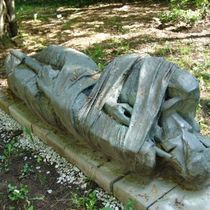
RequiemValentin Starchev

Woman of DobrudjaBoris Gondov

FounderValentin Starchev

Yoan Koukouzel Ivan Kolev
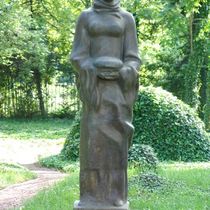
Woman with Bread Velichko Minekov

Twentieth CenturyIvan Varchev

Orpheus Velichko Minekov

Interrogation Velichko Minekov
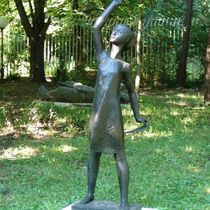
YouthIvan Neshev

Walking Figure Velichko Minekov
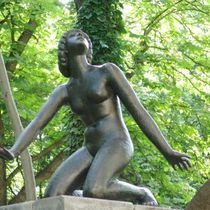
Seated Girl Ljubomir Dalchev
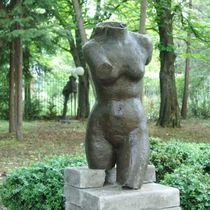
Torso Vassil Radoslavov
